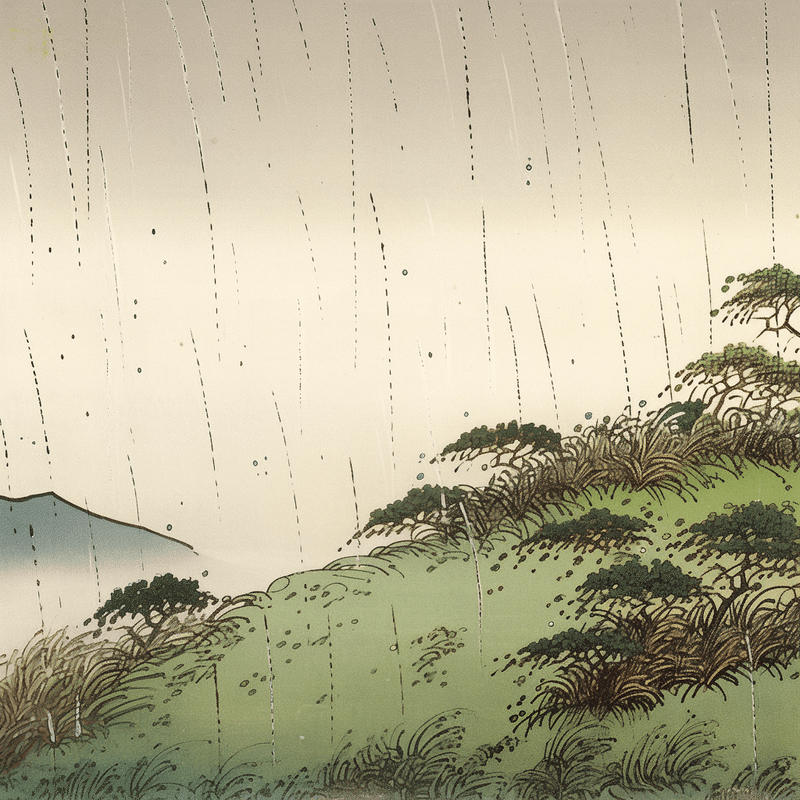
【俳句習慣#55 飯田蛇笏】 AIで俳句の解説と英訳と画像生成
石狩の雨おほつぶに水芭蕉
飯田蛇笏
"In Ishikari's rain, large droplets fall on the skunk cabbage."
Iida Dakotsu

解説:
この俳句は飯田蛇笏によるもので、初夏の北海道石狩地方の景色を描いています。「石狩の雨」は、北海道の豊かな自然とそこに降り注ぐ雨を表現しています。
「おほつぶに」は雨粒の大きさを表現しており、激しい雨を表現しています。それぞれの雨粒が大きいことから、それが豊かな自然を育てる力強さと生命力を象徴しています。
そして、「水芭蕉」は水辺に咲く、美しい白い花を指し、初夏の季節を象徴しています。しかし、水芭蕉はその美しさとは裏腹に、雨が降ると花が傷みやすいという特性を持つため、豊かさと同時に儚さや悲しみも感じさせます。
ここで、飯田蛇笏は雨と水芭蕉という対照的な要素を組み合わせることで、自然の力強さと美しさ、そしてその儚さを表現しています。それぞれの要素が相互に影響を及ぼし合うことで、より深い意味を持つ一句となっています。
英訳:
This haiku, penned by Iida Dakotsu, paints a picture of the early summer scenery in the Ishikari region of Hokkaido, the northernmost island of Japan. "Ishikari's rain" symbolizes the abundant nature of Hokkaido and the rain that nourishes it.
The term "large droplets" describes the size of the raindrops, indicating a heavy downpour. Each large raindrop represents the vigorous energy and vitality that nurture the lush nature.
Meanwhile, the "skunk cabbage" refers to a beautiful white flower that blooms by the water, symbolizing the season of early summer. However, despite its beauty, the skunk cabbage is known for its fragility in the rain, offering a sense of transient beauty and melancholy.
By juxtaposing contrasting elements of rain and skunk cabbage, Dakotsu conveys the robustness and beauty of nature, as well as its fleetingness. Each element interacts with the others to imbue the haiku with deeper meaning.
飯田蛇笏
飯田 蛇笏(いいだ だこつ、1885年(明治18年)4月26日[1] - 1962年(昭和37年)10月3日[2])は、山梨県出身の日本の俳人。本名、飯田武治[1](いいだ たけはる)。別号に山廬(さんろ)[3]。高浜虚子に師事、山梨の山村で暮らしつつ格調の高い句を作り、村上鬼城などとともに大正時代における「ホトトギス」隆盛期の代表作家として活躍した。俳誌「雲母」を主宰[3]。四男の飯田龍太も俳人であり、飯田家を継ぎ蛇笏の没後に「雲母」主催を継承した。句集に『山廬集』(1932年)、『椿花集』(1966年)、ほかに随筆集なども多数。
六月一日
(英訳:ChatGPT 解説:Bing / ChatGPT 画像生成:midjourney)
この記事が気に入ったらサポートをしてみませんか?
